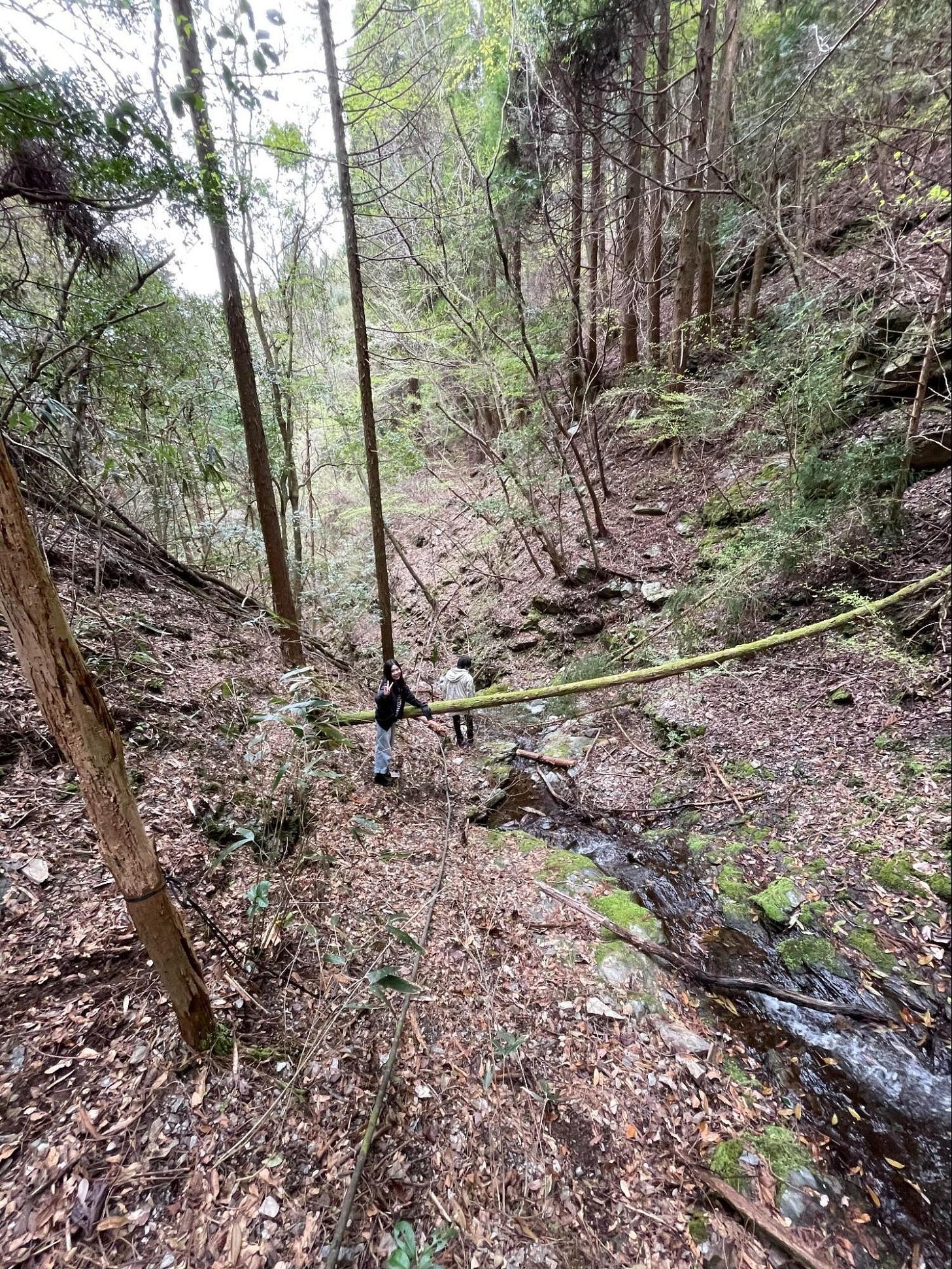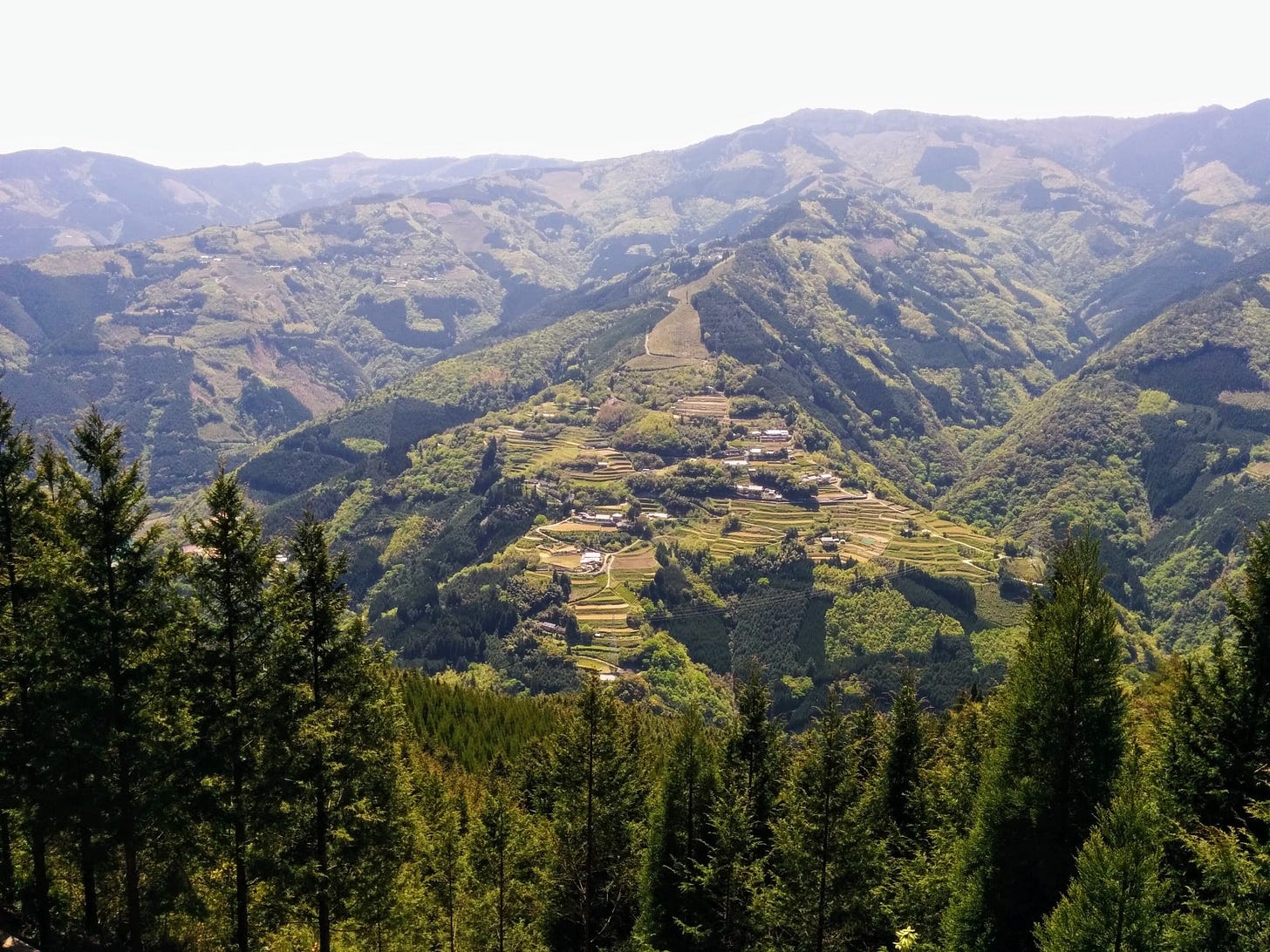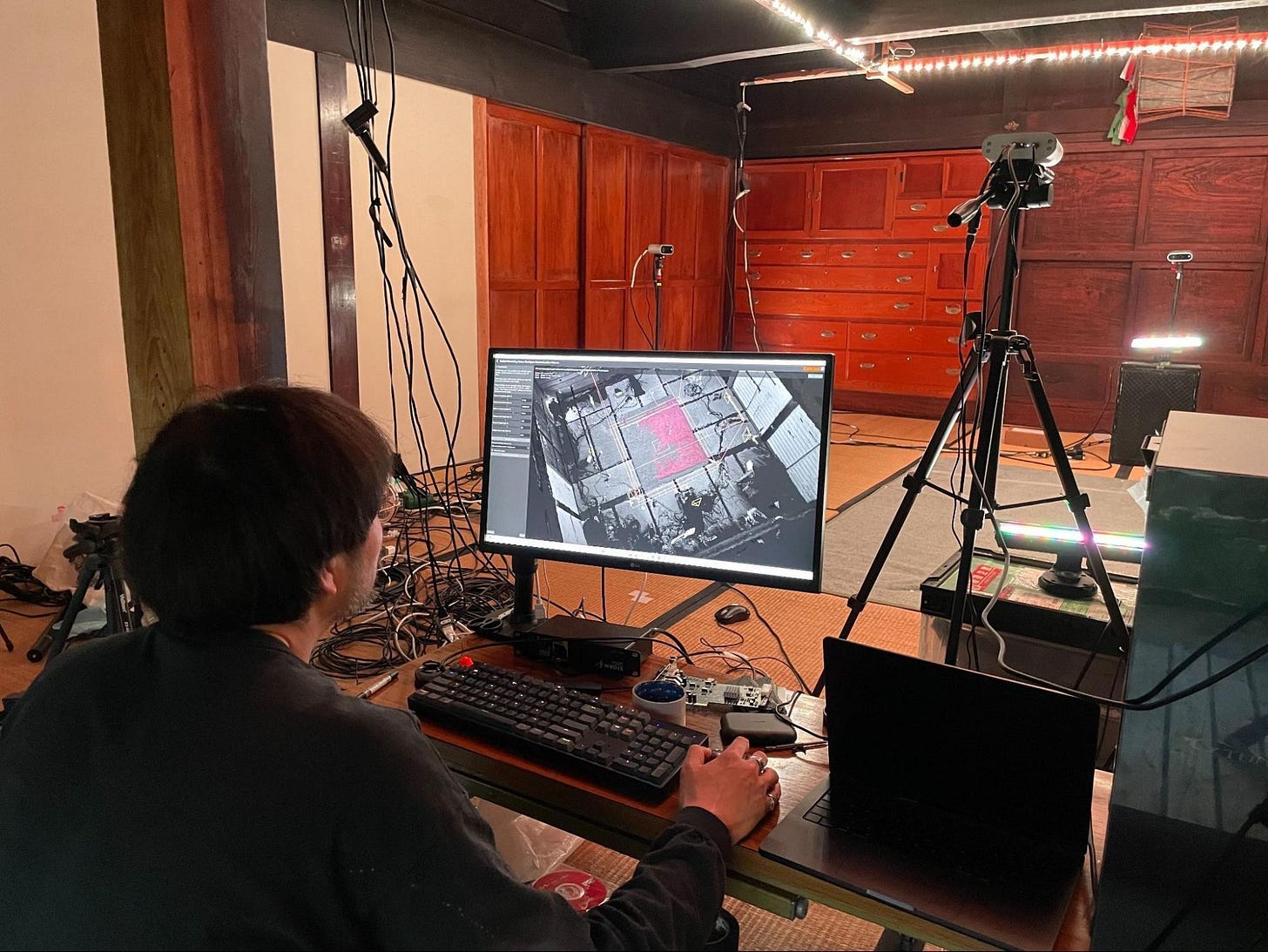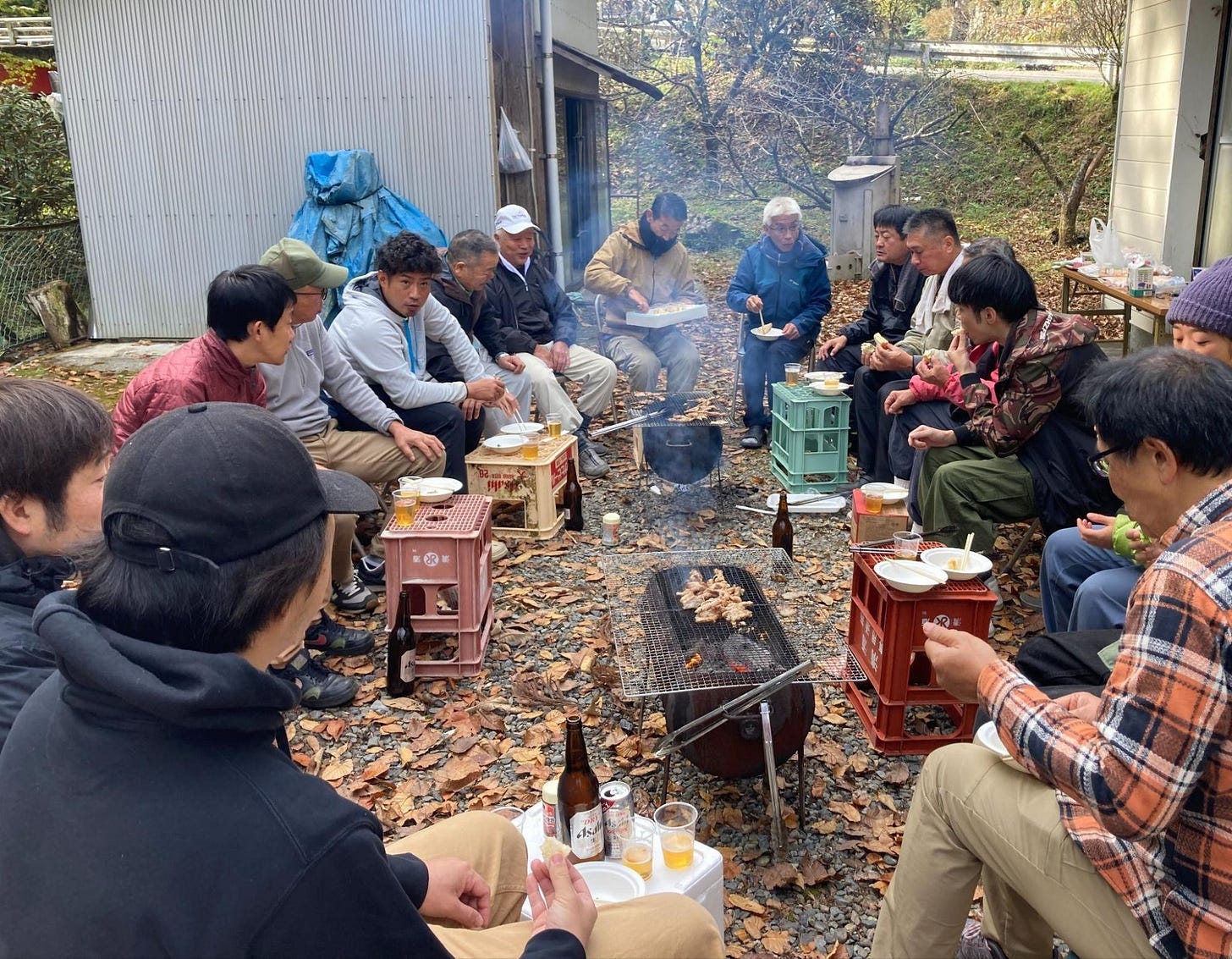The Power of Kagura's Embodiment: A Game Changer for the Future?
Opening Communities, Forging the Future
They call the 21st century a “new age,” but a quarter of it is already gone. Now, thanks to our mobile phones, everyone—young and old—feels like they know everything. Information is just a product we consume, and with endless content overwhelming us, we can’t keep up. That’s why I’m focused on “embodiment.”
What do I mean by embodiment? It’s the ability to use your physical body to understand yourself and the world—it’s the power to genuinely feel alive.
I’m convinced that information is worthless now unless it’s paired with that physical feeling. The worry I have, though, is this: Are we losing our sense of embodiment altogether? This idea keeps popping up, and every time it does, I get this anxious, urgent feeling.
I’m Kenta Murakami from Takumashii Mirai (Resilient Future), a non-profit association. I work on several local projects: I link the Local DAO to the Nishikigoi NFT project, coordinate the Shiiba team on the ground, and help set up new community models based on what Yamakoshi did.
I originally moved to Tokyo for college and stayed for over 15 years. Then, in 2017, I moved here to the village through the government’s community revitalization program. I first worked as the village’s coordinator for newcomers. Since then, I’ve taken over and fixed up the village’s campground, which was about to close. I also turned a run-down, old house into a share house. My aim is to balance making money with living a self-sufficient life right here.
I’m now in my ninth year. The local people have been incredibly generous. They’ve trusted me with duties in the community association and even the fire brigade. Thanks to their kindness, I now get to perform as one of the dancers in the local traditional Kagura.
This village, Shiiba in Miyazaki Prefecture, is hidden in the middle of the big mountains of central Kyushu. It is famous as one of Japan’s three most secret places.
The village is great! Its old way of farming and taking care of the forests has been named a World Important Farm System. It is also part of the “Most Beautiful Villages in Japan” group. People know it as a special place for old-style farming that uses fire (slash-and-burn) and for good fishing in the rivers.
But, like many mountain towns, the village faces a very big problem: fewer and fewer people live here. The young people who should take the place of the older generation are not staying. This makes it look like the future of the community is coming to a dead end. The worry and feeling of giving up that this brings is very deep. I call this situation “the sickness that cannot be cured: losing people.”
As someone who moved here from the city with no money and no job, life in this village is definitely not easy. But, it feels much more real and fulfilling than before. I might have inconveniences, but I have no real complaints. The mountain life I share with the local people is still full of excitement and new things every day. Even though I’m often thrown off balance by a daily life I couldn’t have imagined in the city, I really hope this routine can last forever.
However, if things stay the way they are now, that is impossible. Why? Because the reliable local people I depend on are much older than I am. In about ten years, even my seniors—who are strong from working in the mountains—will have to retire from their main jobs. After that, there will only be a small number of people left who can work. Taking care of the forests, mowing the grass on the roads, and keeping the mountain life going is our job as residents. But if we can’t expect young people to move back or new people to join us, there will be no one left to do the work, and we will hit that “dead end.”
Just working hard on the immediate tasks in front of us won’t change the problem of a shrinking population. Because I decided to live in this village, and I realized this inevitable “dead end,” I had no choice but to start an action to break through it.
That’s why, following the success of the Nishikigoi NFT project, which grew from my earlier work as a relocation coordinator, I am now working to bring the concept of “Digital Villagers”—a role anyone in the world can take on—into the reality of this village.
My goal is to open up our closed community, the “Mura” (village), by working with Crypto Village, a company that connects technology with local areas and supports diverse communities and cultures. The purpose is to create a way for more people to take part and pave the way for this village to continue into the future.
However, this is also risky. It’s like a double-edged sword: it could cause trouble in a village that has lived quietly until now. To prevent that, as an outsider who came here first, my job as the local coordinator is to sometimes act as a shield for the community, help explain the new ideas clearly, and take responsibility for possible risks. I have to balance the needs of the village and the outside world, connecting local life with the global community.
Since I noticed the problem, I knew I had to be the one to act. Even if my plan isn’t the absolute best, if it can become a foundation for the future, I will be happy. With only the resolve to keep working until I die, I started on this long journey. After much discussion, we decided that Kagura (the traditional dance) would be the perfect image for the NFT art, as it represents the village’s core identity. And now, this project has been chosen by the Agency for Cultural Affairs to be a model case for “creating a new business model for promoting local culture using NFT technology.”
I feel like the wind has started to blow. Now, for the parts that are still missing, I really hope you, who are reading this, will lend your strength. I know this was a long introduction, but today I wanted to share this story with you.
Believing in Art, Betting on the Power of NFTs
The idea of “Digital Villagers” was actually put into practice already in the former Yamakoshi Village in Nagaoka City, Niigata Prefecture, as the “Nishikigoi NFT” project. In that model, a unique piece of digital artwork (NFT Art) is treated as a “Digital Residency Certificate,” acting as a passport to join the local community. The project even calls the physical visit of a Digital Villager a “Hometown Return” (Kisei). So, you could say our current tour is a chance to experience that “Hometown Return” a little early.
Choosing the right design for our NFT Art led to a lot of discussion within our team. For example, compared to the Nishikigoi (carp) in our partner village Yamakoshi, or the dragon in Tenryukyo, Kagura is an intangible cultural asset—it has no set, fixed shape. This made it simply very difficult to turn into a piece of art. Even so, we finally decided on Kagura because we believe it truly embodies the long history of life and work that this village has created. We decided to believe in the power of the art that could come from it.
The person who took on this difficult task is Hiroyuki Hori, who works in many fields, including making interactive installations and music videos. He saw this project as a fun, new challenge for a creator. He has been working hard, going through a lot of trial and error to create the art. While he is still thinking about exactly what part of the Kagura to focus on, the final art is planned to be an expression that shines a light on the dancer’s body.
I believe that art is something that teaches us new ways of seeing the world. Art reminds us that the world is a diverse place—ten people see ten different things. It shows us this simple truth through a creative piece and makes us realize why the world is so interesting.
I hope the Shiiba Kagura NFT Art we are making will be the trigger for the world to find this village. And if it helps the local, “native” villagers discover a new way of seeing their own Kagura, I believe that holds the potential to open up our future.
Also, the native villagers sometimes tell me that my reactions—my surprise and my sense of wonder at the village’s everyday life—help them discover or learn new things about their own community. In that sense, I am sure that an outsider can bring a type of “artistic effect” to this village. Maybe the Digital Villagers themselves will become the art for this community.
The team in the former Yamakoshi Village, who first brought the NFT Art and Digital Villager system to life, was forced to evacuate their entire village after the Chuetsu Earthquake. They said that when they could not see a bright future no matter what they tried, they took a leap of faith and bet on the possibility of using NFT for local revitalization, which was a radical idea at the time. We might only be followers of their “Digital Villager” concept, but we strongly feel the need to bet on this possibility as well, hoping to become a new business model for “NFT combined with local culture.”
A Shift in Thinking: Starting from Japan’s Three Great Hidden Villages
I host an online radio show called, “Let’s Survive!” The name shows our resolve to overcome the “terminal illness of population decline” and survive this fast-changing era. But sometimes, I stop and wonder if that resolve is even necessary.
Some people say that the feeling of giving up when you can’t see a future due to population decline is not always a bad thing. They say it might be a readiness to accept “what will be, will be.” This made me think deeply: If the result of population loss is the end of this village, should I just accept that as fate?
My answer is that I don’t disagree, but I can’t fully agree either. “What will be, will be” is okay, but I think it should only come after you have done absolutely everything you can. If that’s the rule, I feel like I haven’t done everything I can yet.
The problems and feelings of being stuck that surround us, like population decline, are caused by the fact that our society’s systems haven’t kept up with the times. The era when we could just assume the population would keep growing ended a long time ago. I even think that not updating the old systems and ways of thinking is the root of all our problems. Trying to turn the population back into growth is impossible. The most important thing is to totally change our ideas and look at the basic assumption again. I’m actually optimistic in a way: if we start with the idea that the population will decrease to a certain point, many problems can be solved just by rebuilding society based on that new reality.
However, maybe it’s hard for cities to feel the impact of population loss, and maybe the country, which sees population as national power, can’t move forward. If that’s the case, we have no choice but to start here, from Shiiba, the place on the front lines. This is the idea behind what we are doing.
Still, completely changing the way we think is not easy. We need to look at everything again, starting from the ground up. At times like this, the keyword “embodiment” that I mentioned earlier comes to mind. I wonder if the right size for a community is the area where people can share information that is connected to their physical body and senses.
I believe we have become too focused on our minds because of the huge amount of information. We need to start by getting our “embodiment” back. The dance moves developed through the mountain life of Shiiba, the natural rhythm and sounds of the drums and flutes imprinted on the ears of the native villagers, and the call-and-response singing that matches the dancers’ breathing—I feel that the Kagura of Shiiba contains the sense of physical life that has been lost in city living.
That is why I want to use Kagura to connect this village with the Digital Villagers. There is so much to learn from the good old Japanese way of life and the strong will to live that Shiiba, one of the three great hidden villages, holds. But first, I want people to experience the village life through Kagura and get to know the people who have kept it going. Kagura is the best gateway into this village.
As more people get involved—not only those interested in community building and country life but also through the world of NFT art—the foundation of this village will become richer and more diverse. When the line between native villagers and digital villagers fades and they mix, a continuous cycle of people moving in and out will begin. When that happens, combined with the extreme local identity of being one of Japan’s three great hidden villages, this village can surely become a special place that opens the door to a new era. That is the future I dream of.
Moving forward, the NFT art will be created alongside the Kagura tour in November, and people should be able to buy it in January. A website will also be launched soon. The money from the NFT sales will be the starting funds for our activities. Once the people who own the NFT art of Kagura gather as Digital Villagers, we will discuss the next steps for the DAO (Decentralized Autonomous Organization). Of course, I have ideas I’m holding onto, but I won’t force them on anyone. The first step is for everyone to just have fun and play. Once the charm of Shiiba truly sinks in, I believe various movements will naturally start on their own.
We are aiming to create a future no one has ever seen before, using this village—which can no longer picture its future because of the terminal illness of population decline—as our stage. Saying that I want to spend the rest of my life on this might sound too intense, but we will use the NFT art—which is made to please the gods—to invite people to join this kind of “game.” Please keep an eye on the Shiiba team’s actions from now on.
■ Socials
Nishikigoi NFT Official Website
■NFT Marketplace
Opensea






